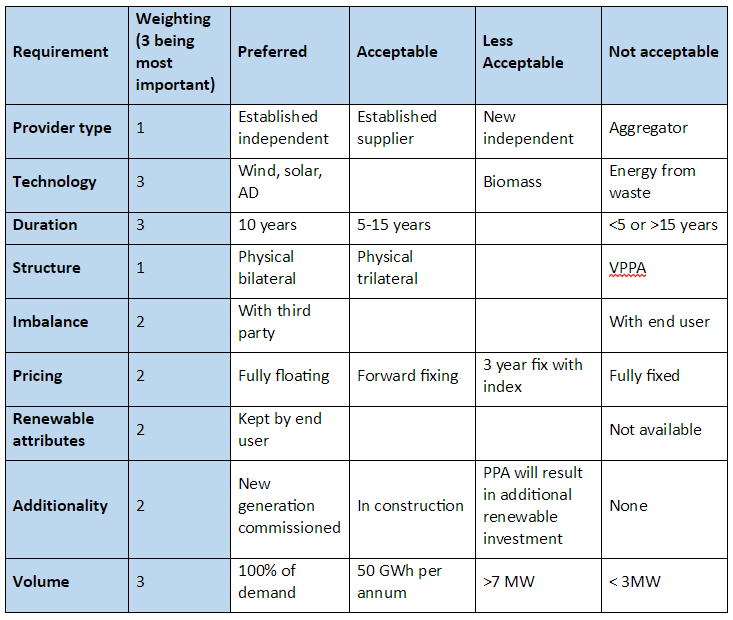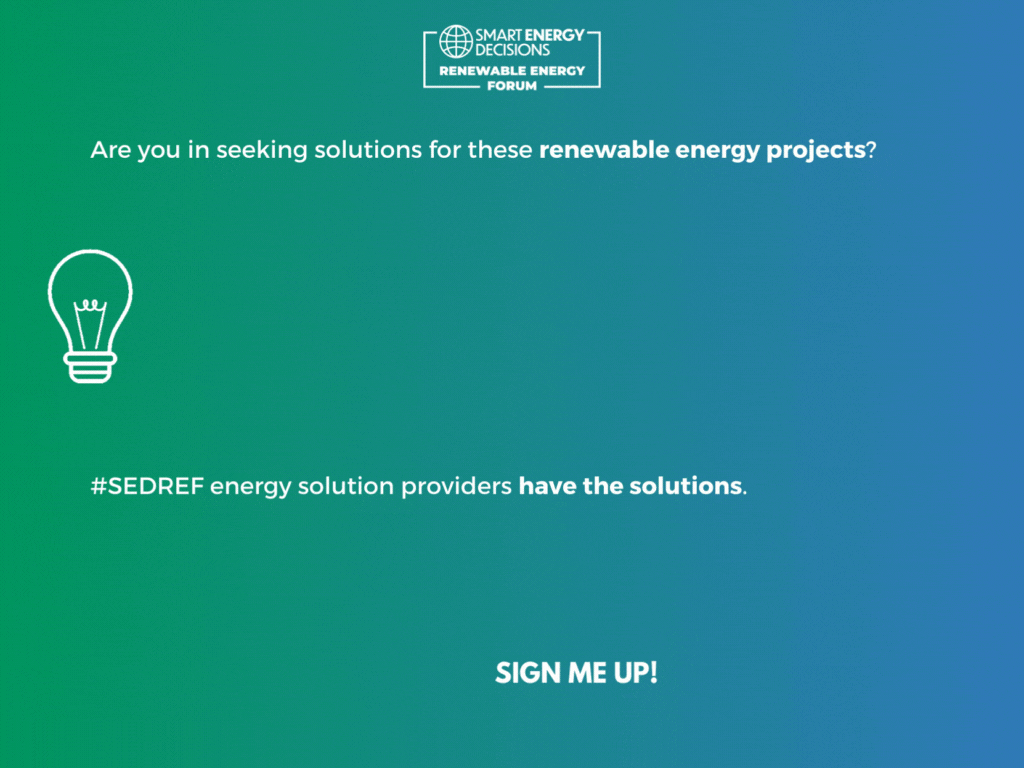Commercial, Finance, Industrial, Sourcing Renewables - December 11, 2017 - By Helen Wallace-Fisher
Evaluating PPA opportunities to best suit your needs
In recent years the growth in the renewables industry and the push for corporate sustainability has led to an increase in products available to energy consumers in the form of power purchase agreements (PPAs). While many companies are attracted to what are often long-term, fixed-price deals, such deals have also caused some companies to shy away due to concerns over striking an agreement that ends up unfavorably priced compared to wholesale prices or over-contracting against potential reductions in their future demand.
PPAs now offer a huge range of options in terms of, amongst other factors, type, structure, pricing and duration, meaning that commercial and industrial buyers should not dismiss them as an option. Given the breadth and depth of options available, it is worth giving consideration to seek out the PPA that provides the best fit to your specific set of circumstances and needs and enables you to achieve desired outcomes. PPA buyers no longer need to accept the first option that appears on their radar; they have the option to be discerning consumers able to shop around. To ensure you find the PPA that best suits you, it is a vital and essential exercise to proactively define your specific needs. This exercise means you are far more likely to find the best fit for you, or at least the one with the fewest compromises.
A simple matrix Accenture refers to as "the Matrix of Acceptability" can be an effective tool for framing PPA requirements and vital factors for consideration. The Matrix of Acceptability is customizable and works under almost any set of circumstances.
STEP 1 - As a starting point, you should consider the range of options available, such as:
- Provider type – small independent or larger supplier, established or new entrant
- Generation technology type – wind, solar, etc.
- Contract duration
- Contract structure – physical, financial (virtual PPA), bilateral or trilateral
- Imbalance responsibility – particularly important for intermittent generation
- Pricing mechanism – fixed, indexed, flexible with block price fixing
- Renewable attributes
- Additionality requirement
- Volume requirement to be covered
The criteria an individual buyer should consider can be varied according to specific requirements and objectives, but the above factors should be included to some degree.
STEP 2 - The second stage in the process involves defining degrees of acceptability for each of the core criteria. We do this against four options:
- Preferred – for each of the criteria, how would your ideal PPA look?
- Acceptable – if your preferred option is not available, or comes at too high a price, what would/could you compromise on?
- Less acceptable – if there were sufficient incentive, or necessity to do so, what options could still be workable?
- Not acceptable – what permutations are definitely not possible for ethical, financial, operational or other essential reasons?
STEP 3 - At this point in the process, a weighting for the preferred/acceptable/less acceptable/not acceptable criteria is defined by assigning a numerical value to each (a good starting point for this is 3, 2, 1 and 0 points for preferred/acceptable/less acceptable/not acceptable, however this can be varied according to a specific set of needs, with (for example) preferred being weighted as 6 and not acceptable as 1 if a particular inclination or disinclination for a variable is present.
STEP 4 - The final stage of the evaluation process involves weighting the individual factors pertaining to individual PPA offers (for example, "does this PPA come from the preferred technology type?" etc).
A simplified example is shown below.

The matrices can be used in two different ways:
- To design the requirements for a PPA tender and easily evaluate offers received through such a tender
- To evaluate and assess the viability and fit of PPAs (often onsite PPAs) that are received ad hoc
Whilst this matrix is a very useful tool in assessing and evaluating PPA offers, it does (like all other benchmarking methodologies of this type, have the downside of not being able to provide insight on intangible factors of a qualitative rather than quantitative nature, that do not easily lend themselves to being scored. This would include factors such as –
- Assessing how a potential PPA provider is seen by the public, a particularly key element for off-takers with a strong focus on Corporate Social Responsibility or reputational risk
- How good, or otherwise, a provider might be at getting contracts negotiated and signed down in a timely manner – if a particular PPA offer scores highly on all criteria, but ultimately takes an inordinate amount of time to sign down, there is little advantage to be had
- Flexibility and control over other off-takers – if other off-takers contracting with the same PPA provider are competitors or companies with dubious ethical credentials there may conflict of interest or competing agendas that ultimately make even the most highly scoring PPA unworkable
However, notwithstanding the unknown intangibles, which are, under any circumstances an inevitability in the commercial world, undertaking a benchmarking of PPA options is not only recommended, it is vital to ensure not only commercial success, but also to avoid expensive mistakes. Ensuring the right PPA is selected is fundamental to meeting not only financial and corporate objectives, but also wider procurement and sustainability objectives too.

Helen Wallace-Fisher is the international risk manager within Energy Management as a Service at Accenture. She has more than 23 years of experience in the energy industry, the last 12 of which have been specializing in developing energy risk policies and procurement strategies for large energy consumers.
Prior to Accenture, Helen worked for an energy market intelligence provider, reporting on changes within the energy industry in the UK. She also held a number of roles within electricity supply companies, specializing in regulatory matters and changes to the wholesale trading arrangements.
Helen has also worked for global facilities company CBRE, responsible for the energy section of their asset management portfolio. Helen is a regular speaker at international conferences.
Read These Related Articles:
- Accenture targets net zero by 2025
- Accenture and Microsoft collaborate to accelerate U.K.’s transition to net-zero
- Accenture, Microsoft Lead Collaboration on Software Sustainability Project
- One-Third of European Companies Have Net Zero Targets, New Report Finds
- Shell, Accenture, Amex Launch SAF Software
Stay Up-To-Date












